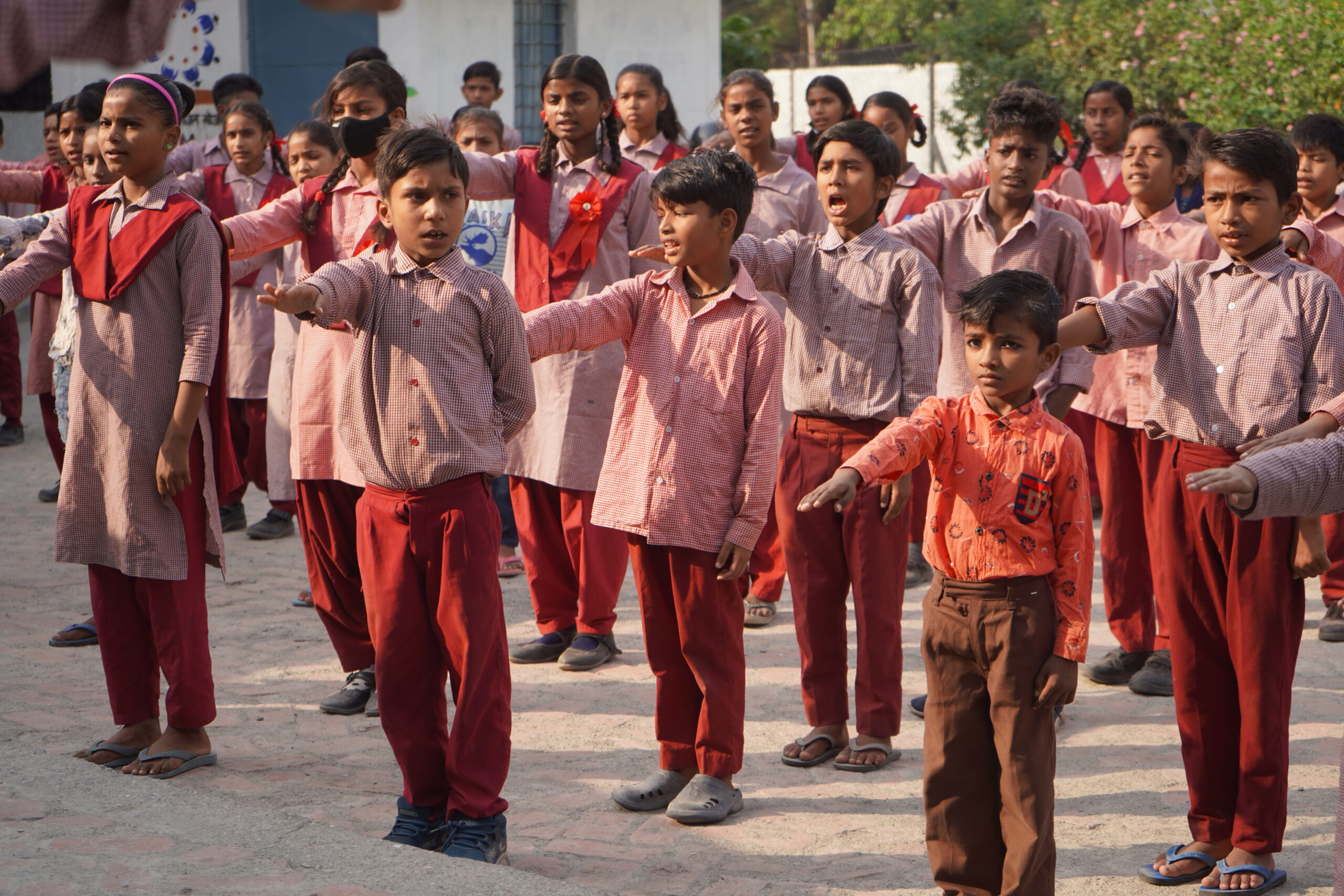Close your eyes and imagine a group of students going to school. Now, tell me the image that came to your mind. Most of you might say you saw school buses, parents dropping children in cars and two wheelers, some students walking or bicycling to schools. Last year, Dream a Dream’s team visited Government Primary School, Neelkanth in the hilly regions of Uttarakhand, where I saw students from neighbouring villages walking long distances to school with their heavy school bags on their shoulders. Some of them carried the school bags of their younger siblings too. In the hills, all the roads are not concretized, thus slipping on these trails is a common instance during heavy rains and snowfall. Rudraprayag and Tehri-Garhwal district are the most landslide –prone districts in the country. In disaster-prone areas, bridges that are built over rivers and rivulets are often washed away during heavy rains. This makes the walk to school nearly impossible. In 2023, more than 50 people died, and 13 went missing due to heavy rains. Students who decide to go to schools during these times, risk their lives, wading through overflowing water bodies.
Adding to these challenges of the terrain, other factors that are contributing to child adversity are also prevalent. Around 58.8% of children between 6 months to 5 years and 40.9% girls and 27.6% boys in the age group of 15-19 years in Uttarakhand are anaemic as per National Family Health Survey-5 report (2020-21). Research has shown that anaemia might cause lower cognitive function and attention span. Now imagine the mind space with which students in hilly regions reach school. When they are made to study a vast syllabus, through rote learning methods, they were unable to cope. As per ASER report 2018, nearly 65% children in Uttarakhand could not read Class 2 level text and nearly 68% could not do simple maths.
Realising that a one-size-fits-all approach will not work for the state of Uttarakhand, the government launched the Anandam Pathyacharya, a Social Emotional Learning (SEL) based curriculum, contextualised to the needs of children in this region. It is being run across all public schools from Classes 1 to 8, since November 2019. A dedicated first period ensures designated time for Anandam Classes. Processes like Mindful check-in (exercise to bring focus on present), reflective sharing by students (where their views are validated and not compared), mindful check-out (to recall what all happened in the class) support the social-emotional wellbeing of students.
Ms Sunita Bhatnagar, Head Mistress, Government primary school, Paniya Mehta, Nainital shared that her school caters to children coming from very remote areas, usually walking for nearly 2 km to reach school. After starting regular Anandam classes, she observed that students are gradually becoming more focused and joyful at school. They started looking forward to sharing their views and perspectives during Anandam classes and their hesitation in participating in class activities went down considerably. Students also came forward to support their peers in the activities and the feeling of politeness and care in teacher-student relationship increased. Schools and classrooms may be different in geographical location and resources, but Sunita ma’am feels that the connection between a teacher and student lays the foundation of an ecosystem of care and compassion in schools. She believes that Anandam has a lot of learnings for the education system on framing a curriculum for all-round development and hence, actively engages in the implementation of these classes in her school.
During a school visit to GUPS Suryagaon, Bhimtal in Nainital District, a student shared that when their teacher narrates a story from the Anandam books, he visualises himself in the story as the situations and experiences are related to his daily life. Aryan, a 2nd Class student from Dehradun, told how earlier he did not attend school and started playing as soon as his mother left for work. However, he now likes to go to school because he enjoys the stories and activities conducted as soon as he reaches school, during the Anandam classes.
Contexualisation of curriculum and programmes benefits students to gain a deeper understanding of situations that they encounter in real life. Adding local stories of the state, incorporating local language vocabulary, ensuring representation from both Garhwal and Kumaon regions of Uttarakhand in curriculum development committee were some of the steps undertaken by the State Council of Educational Research and Training (SCERT) while designing the Teacher Handbooks for Anandam Pathyacharya. It supported students in knowing where they come from, and how their ecosystem is relevant. We can grow from our local contexts, enjoy our unique journeys and build narratives which can change how we perceive education globally.
About the Author:
Simrat Kaur is Associate Manager, Systems Demonstration (Uttarakhand) with Dream a Dream. She likes to watch movies, read books and derive her insights from observing the surroundings and nature. She is keenly interested in exploring social emotional wellbeing practices, mindfulness and making them accessible to students, educators and community.


